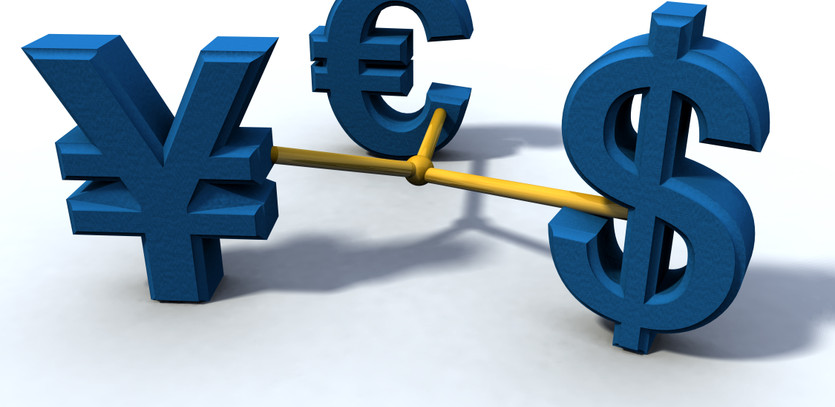At the heart of the turbulent sea of forex trading lies the yen carry trade, a strategy as intriguing as it is effective. This clever strategy is enacted when investors capitalize on the low-interest rate offered by the Japanese yen. They borrow these yen at a favorable rate and invest them into either U.S. dollars or currencies of other countries that offer high-interest rates on their bonds.
This strategic play allows forex traders to earn a profit that, while seemingly modest, is notably low-risk. They enjoy the high-interest rates from their investments, offset by the low-interest rates on the yen they borrowed. Adding to the charm of this approach, the currency broker deposits the resulting difference into the trader's account every day, further boosting the returns.
As a case in point, during the second quarter of 2018, traders reaped a healthy profit of 4.5%, even after accounting for deductions such as fees, interest rates, and exchange rate dynamics.
Examining the Alluring Benefits of the Carry Trade
The carry trade strategy reveals its true colors of profitability as long as the involved currencies remain stable. This steady-state scenario allows traders to confidently anticipate a consistent return from their investments in high-yield currencies, providing a comforting sense of predictability amidst the often chaotic financial landscape.
The carry trade's effectiveness can dramatically increase when the currency of the high-interest rate country appreciates. When it's time for investors to redeem their bonds, they can comfortably repay the low-interest yen loan with the more robust currency, pocketing the difference.
When this carry trade strategy is implemented en masse, it has profound ripple effects on the financial markets. It can spark a surge in demand for high-interest rate bonds, transforming these bonds into sought-after commodities that can be profitably sold on the secondary market.
- It can stimulate a surge in demand for high-interest rate bonds, transforming these bonds into lucrative assets that can be sold for a profit on the secondary market.
- The heightened demand for these bonds can incite a thriving market for the currency, causing its value to soar. This can carve a path to additional profits for holders of the higher-yield bonds.
- The broad impact of these strategic movements significantly contributes to the bustling foreign exchange market, which sees daily trades reaching a mind-boggling $5.1 trillion.
Simultaneously, the increased demand for these bonds kindles a thriving market for the currency, causing its value to soar. This domino effect can pave the way for additional profits for holders of the higher-yield bonds. This interconnected web of strategic moves significantly contributes to the thriving foreign exchange market, which sees daily trades reaching an astonishing $5.1 trillion.
Navigating the Potential Risks of the Carry Trade
Despite its enticing benefits, the carry trade, like any investment strategy, is not without its potential pitfalls. Traders may find themselves in troubled waters when the currency values take an unexpected turn. In a yen carry trade, this could occur if the value of the yen surges or the dollar experiences a decline.
When faced with such scenarios, traders are thrown into a precarious situation, needing to acquire more dollars to repay the yen they've borrowed. If the currency value disparity is considerable, it could drive them into a financial crisis or even bankruptcy.
Another potential risk emerges if the currency values fluctuate significantly throughout the year. Traders are obliged to maintain a minimum balance in their brokerage account. In the event of a sizeable currency shift, and the trader is without additional cash to keep the balance, the broker could close the account. Such a move could result in the loss of the trader's entire investment.
Assessing the Yen Carry Trade in Recent Times
As of August 2018, the yen carry trade found itself under a particularly positive light, appearing more attractive than it had been in recent months. The Bank of Japan, in a strategic and pivotal move, announced its intention to maintain its low-interest rates for an extended duration. This policy presented a significant shift that triggered a renewed interest in the yen carry trade, offering a much-needed respite from the previous turbulent months.
Rewinding back to the beginning of that year, the yen was experiencing significant appreciation, with an increase of 5.8% witnessed in just the first quarter. This sudden and unexpected inflation of the yen's value was largely influenced by political upheaval and the potential for scandal. Investors were closely monitoring the political landscape, anticipating that a potential scandal could lead to the ousting of Prime Minister Shinzo Abe from office.
This posed a potential threat to the economic stability of the country as the removal of the Prime Minister would inevitably lead to the termination of his expansionary fiscal policy. This policy, marked by high government spending and trade liberalization, had been instrumental in stabilizing the country's economy, making its abrupt end a concern for investors.
Adding to the economic turbulence, the Bank of Japan announced the possibility of an interest rate hike in 2019, as the economy seemed to be showing signs of improvement. This potential change in monetary policy came after nearly a decade of a weak yen that had fueled the carry trade, thereby making the yen carry trade an attractive option for forex traders globally.
In this context, the Bank of Japan's decision to retain low-interest rates for a longer period appeared as a beacon of hope for the forex market. It rejuvenated the yen carry trade, prompting traders and investors to reevaluate and readjust their strategies, underscoring the dynamic nature of the forex market and the importance of the yen carry trade within this complex global landscape.
Tracing the Impact of the Economic Recession on the Yen Carry Trade
In 2008, as the financial world was reeling from the Great Recession, the yen carry trade with the U.S. dollar took a brief pause. The Federal Reserve was battling the economic downturn by reducing the fed funds rate to near zero.
In response, yen carry trade strategists pivoted towards high-yield currencies like the Brazilian real, Australian dollar, and Turkish lira. For example, many forex traders borrowed yen at near-zero interest to buy Australian dollars, which boasted an enticing 4.5% return.
Exploring the Influence of the Yen Carry Trade on the U.S. Economy
The yen carry trade has undeniably left its mark on the U.S. economy. Many experts attribute the global liquidity present before the 2008 financial crisis to the strategies deployed in yen carry trade.
Japanese banks had a staggering $15 trillion in deposits to lend. As a result, the yen carry trade expanded to an impressive $500 billion. These low-cost yen loans fueled the purchase of higher-yielding investments across the globe, including traditional dollar-denominated bonds, home loans in South Korea, and stocks in India.
However, the onset of the financial crisis caused investors to panic, selling off their risky assets to buy yen. This response suggested that the yen carry trade might have inflated the pre-crisis bubble and exacerbated its subsequent burst.
The Interplay between the Yen Carry Trade and Global Markets
In 2017, Japan persisted in its strategy of maintaining low-interest rates with the intention of promoting a cheaper yen and a stronger dollar, thus giving its exports a competitive edge. Japan, being one of the largest owners of U.S. debt, has played a significant role in reinforcing the U.S. Treasury, helping to keep bond yields low, even when the Federal Reserve raises short-term rates.
Japan's drive to keep the yen weak relative to the dollar has wider implications on global markets. Given that most commodities contracts, including oil and gold, are priced in dollars, a strong dollar causes these commodities' prices to drop. A robust dollar can also temper the demand for U.S. stocks. Therefore, investors involved in these asset types need to stay vigilant about the dynamics of the yen carry trade.





